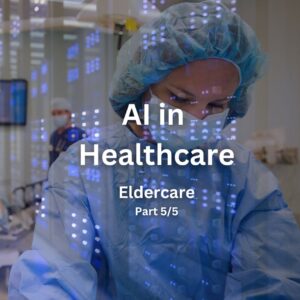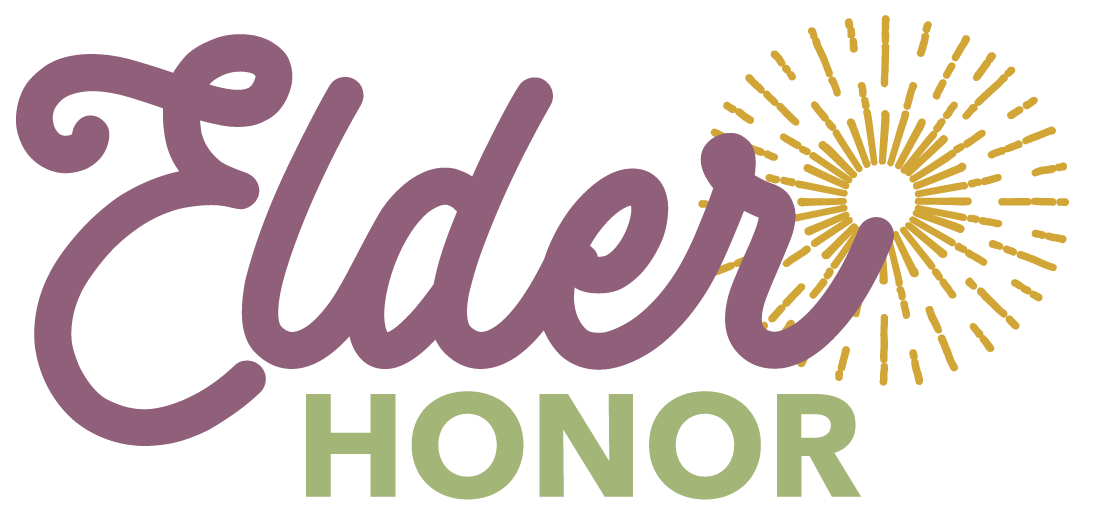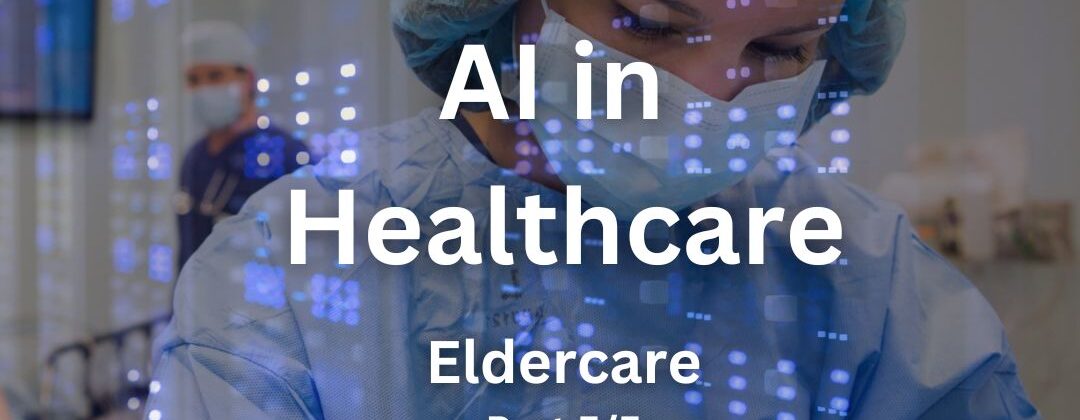
Introduction
This is Part 5 in the series on Artificial Intelligence in Healthcare. Part 1 provided a broad overview of the industry and how AI is already being used. Part 2 focused on how doctors and clinicians use AI and how it will impact their daily practices. Part 3 described how hospitals are using AI to increase efficiency across several departments while at the same time providing better patient access to hospital systems. Part 4 illustrates how the pharmaceutical industry uses AI to reduce the R&D of new drugs but is also more focused on clinical trials and production. In Part 5, I will discuss how AI is helping in eldercare, probably not an area you think it would be in, but it is increasingly helping caregivers in many dimensions.
Why Eldercare?
The simple reason is that it’s complicated. My response is not complicated; healthcare for older adults is complicated. Think about it for a minute. First, this is my opinion, and I’m not a doctor, but I have experience providing care for our parents and stepparents for almost 15 years.
When you’re born, life progresses at a rapid pace. Assuming the pregnancy and delivery went well, the newborn’s body changes almost every minute until you hit around your mid-twenties. After that, you degrade, sorry.
So, if you are growing and changing fast in the first 25 years, why does everything take another 50 to 70 years to fall apart? It’s complicated. Everyday things happen when you grow up; there are growth charts, statistics, education, physical abilities, and more that everyone knows about. Generally speaking, your body can heal independently if something like a broken bone happens when properly set.
Once you hit that magic age, it’s different for everyone; your body doesn’t seem to work as well as it used to. When something does happen, it takes longer to figure out why. For example, it’s just been in the last ten years that inflammation has been understood to cause many aging problems. More recent research shows the microbiome in your gut is turning out to impact your health significantly. Yes, you are what you eat, and food is now medicine.
Where we are now
A long time ago, in the early 2010s, I came across a study that had a set of seniors in a long-term care facility wear smart watches for 90 days to understand what could be learned from simple metabolic measurements. My apologies, but I can’t find that study for your reference. The net results surprised the team as they could predict a person’s illness up to 9 days before the onset of actual symptoms.
So, what could you do if you had nine days of advanced warning that a cold, or something more serious, was coming? A lot of preventive measures, I would hope! That’s where AI makes the most strides as it trains on a lot of data to predict anything, in this case, illness. What’s remarkable is that this was accomplished by measuring your heartbeats!
A later study done in 2020 with a Fitbit and published in Nature was trying to determine if you could tell if you had an infection, COVID in this case. Sure enough, ten days before symptoms appeared, indicators showed you were fighting an illness; they couldn’t tell you what kind. Again, it was big data and running algorithms against that data with just heartbeats.
A short side note: Digital watches have existed since the early 70s. You can still buy one of those original watches if you can afford it! Companies jumped on this new technology, advancing to more extensive features and functions, curved displays, GPS, and even cell phone connections 2014.
The wearable medical device market is around $99.5B, growing at 14% annually, according to GlobalData, a research company in London. These more sophisticated devices can measure oxygen, activity, sleep patterns, glucose levels, body temperature, respiration, and more.
Actively monitoring your Parents
They probably did it to you when you were younger and not with the ease you can now, so now’s your chance to turn the tables. They might even appreciate it once they get past the thought of you tracking them. Below are some reasons why you should monitor your parents. I’m not suggesting you do this without permission; you should discuss this with them beforehand. Otherwise, it will most likely have a negative result.
Fall risks
The CDC reports multiple types of injuries every year. This report shows that in the US, 14MM people over 65 fall yearly; that’s one in four adults over 65. Falls account for 25% of all hospital and 40% of nursing home admissions. With 55% of all falls occurring among older people, it’s a big problem. Many falls have not been reported, so actual numbers are much higher.
One of the easiest ways to monitor a fall is with a smartwatch, as they all have accelerometers. An accelerometer tracks the rate and direction of motion in any device. It’s why you can follow the number of steps you take throughout the day. If you have a smartwatch, you can track a fall. Some watches can send an alert to notify you of a fall. When the alert goes off, you can quickly get to your parent, call them if they are far away, and provide immediate assistance or call an ambulance. Just about every smartwatch has these capabilities, so I won’t list them here.
Independence
The most significant impact your parent will have is the loss of independence. That usually starts with the ability to drive. Here again is where monitoring can help. Every parent of a pre-teen through teenager can track their child through a cell phone. I let my kids follow me when traveling throughout the US, Europe, and Latin America, and they got a kick out of it. You can do the same with your parents; please let them know beforehand.
Several companies even let you set geographic boundaries to alert you when they go outside their routine. This is important as they age and can’t find their way home. This happens when older people are in that in-between stage of still capable but not sure or getting lost occasionally.
This would have helped us when my Dad turned the wrong way and we got a call from the Port Authority at 9:30 one night. He’d been driving for 7 or 8 hours after visiting someone, and although everything looked familiar to him, he didn’t know where he was. My Sister and I had to drive an hour and a half to pick him up and then drive him home. It was a very long night.
Hearing loss
The loss of hearing can occur at any age for multiple reasons. Some of the more common reasons are continual loud noises like in factories, blasts, or other machinery. Prolonged exposure to vacuum cleaners and lawnmowers can cause hearing loss, but it still doesn’t get you out of doing either for some reason. Age-related hearing loss is common in 30% of people over 65. Of course, there’s also music-induced hearing loss, which I’ve been telling my children about to no effect.
Hearing loss can come across as not paying attention, losing a conversation when there is background noise, or seemingly ignoring commands. People who lose hearing can easily be categorized as grumpy, wanting to be alone, and not conversant when, in reality, they are struggling just to hear a conversation.
Hearing aids have been around for a long time; the first was a modified stethoscope in 1855. The term “hearables” was coined in 2015 to include any wireless device and resulted from the development of Bragi, the technology in Air Pods and Galaxy Buds. This has drastically reduced the price of hearing aids from thousands to hundreds of dollars. The next jump is real-time translation! Imagine speaking to someone from another country and hearing the translation in your ear. Tourism will take off when this comes out.
Sleeping
The CDC published a report, Sleep Difficulties in Adults, that shows 14% have some trouble falling and staying asleep. Deep sleep is needed for your body to repair itself and flush out dead cells. If you’re not getting good sleep, your health will suffer. Many smartwatches can now measure your sleep and even indicate your level of sleep. If you don’t wear one to bed, there are devices that you wear on a finger, like a ring. Oura is probably the most well-known, followed by SleepOn.
Companies like Bia provide that feedback through a mask if you’re interested in neurofeedback while you sleep. If that is too much, then there’s Muse, which uses a more lightweight headband. If you or your parent are not into wearables during sleep, there is the Withings Sleep mat; this device can even turn on lights when you get out of bed, which is very important to seniors to reduce tripping hazards.
Many of these devices are on the market, and more are coming. I haven’t tried any of these devices, nor is this an endorsement for them; I’m simply describing what is available. These devices use varying degrees of AI/machine learning to monitor and alert you when something abnormal occurs; they’ll only improve over time.
Home alone
There will come a time when you or your parent will be living at home alone. Being alone is most likely due to choosing to be by themselves, a result of divorce, or that their spouse passed away. Depending on health, this time alone may be short, a couple weeks to months, or several years. More active seniors tend to live by themselves for many years. Most will want to stay in the home as they age as it’s more familiar and capable of supporting them and less expensive than a facility. There will come a time when you’ll need to be more active with monitoring their health, but not yet full-time. This time can be a couple of months to several years.
Home monitoring has been around for a long time in the security space. An alarm system is standard, especially with newer technologies in the past decade. The unique aspect is using home monitoring and matching that with AI to manage your or your parent’s health. These systems can determine falls, lack of activity, the type of activity, and much more.
Some of the features of this type of monitoring are:
- They are not intrusive; the system monitors their activity.
- 24/7 tracking of movements throughout the day and night.
- Showing pacing or walking around at night.
- Monitoring the inside environment: temperature, humidity, etc.
- Alerts for non-routine movement: frequent or fewer trips to the bathroom.
- Unlocking or locking doors remotely.
AI identifies when something abnormal is happening and allows someone to step in and determine the cause. Additionally, doctors can better diagnose conditions by seeing habits over time instead of what the patient can recall when asked.
Monitors combine motion detectors and various sensors, such as lights, doors, water, garage door, temperature, bed or chair, etc. Some companies that currently provide this are Envoy at Home, Livindi, and Rest Assured. See this National Council on Aging article for more information on selecting a home monitoring system. There are also institutional versions of monitoring from companies such as Vayyar.
Family care
Caring for an aging parent can require much work and coordination between family members, hired caregivers, clinicians, and facilities. Luckily, several apps make that job more manageable. Dividing up who takes Mom or Dad to their appointments, makes meals, cleans, mows the grass (with ear guards, of course!), and more are now an app away. More sophisticated apps will tie in monitoring data so everyone can see how their parent is doing and the family is up to speed. This is the machine learning part of AI in many of these products.
Some of these apps are CircleofCare, Carely, Caring Village, and ones that work with an in-home care team like Sensi. These and many more apps coordinate care across your family and others, with some starting to directly integrate with health systems technology so clinicians can view longer-term symptoms.
It’s important to note that while wearables and other devices can offer clues about health, direct monitoring of internal organ function typically requires medical devices or diagnostic tests performed in clinical settings. Integration with home-based blood devices with apps on cell phones is already changing diagnoses, as mentioned before. Several companies provide in-home test kits for various measurements. Lastly, some newer products include a broader range of biometrics like Withings BeamO and smart clothing, so stay tuned.
Loneliness
I’ve written about the effects of isolation before: Is your parent in lockdown? Give them more attention and, Loneliness kills, don’t let it! It’s a real problem, and you must be aware of it – continually. It’s so prominent that they announced a Minister of Loneliness in 2018, and the U.S. National Academies of Science initiated a long-term study on loneliness that same year.
The first part of isolation usually starts when your children don’t need to hold your hand and can walk or take that sled ride alone. Then comes going out with friends, and the big one: they get their driver’s license. The hard one is when they leave to start their own life; it could start with college, the military, a career, or chasing someone to another location.
Then comes the loss of friends through them moving away, to accidents, disease, death, or an argument you wish never happened. Then it’s your parents, probably the greatest loss other than one of your children passing away. Then, if you’re married, your spouse. Loneliness is painful because it’s about relationships; without those relationships, loneliness quickly becomes isolation.
Unfortunately, AI is of little help right now with loneliness. Yes, AI relationship bots are available that can mimic someone so you can have a conversation with them, but it’s still a bot. Stay in touch with your loved ones; in-person is the best, video is good, and chatting is OK. Being there physically is the best way to confront loneliness; we are relational beings regardless what tech of what tech says they can do. My apologies for the digression, but it’s an important limit of technology that makes us different and human.
Summary
I started this Part by saying that eldercare is complicated; hopefully, you understand why. The industry has responded in the last decade with tools to help caregivers provide more inclusive care than ever before. AI will increasingly be leveraged to help you or your parents stay more independent and healthier longer, which is everyone’s goal.
I hope you found this series of articles helpful in understanding how AI impacts healthcare today and will have a significant impact over the next several years. Advances in medicines, monitoring, diagnosing, and providing care will increase so fast that in five years, the industry will look very different than today.
A Personal Note
Many have struggled with caring for an aging parent. My wife and I did this for over a decade. That was easy at first but got increasingly difficult as time passed. I traveled extensively for business; my wife was raising our children, the classic sandwich generation. Luckily, I had a competent older sister who handled most of this for my side of the family, but when she passed away unexpectedly, that role fell to me. My wife, being the oldest on her side of the family, was the point person for her side of the family.
When I asked my colleagues what they were doing about their aging parent, almost all of them said they were winging it, hoping they could get through it but knowing it was going to be difficult and fearing what was coming.
That was a curious response from highly educated people giving million-dollar advice to major corporations around the globe. The statistics don’t look good either, with 10% to 20% of full-time employees taking time off, scheduled and unscheduled, to take care of their parents without pay in many cases. Many employees leave their jobs to take care of their parents. It’s bad for lost income and lost productivity for the company.
Let me give you an example, I was on a video call with a team from a large financial services company when the Vice President received a call from his Dad. The VP was visibly shaken and excused himself to care for his Dad, whom he had cared for several months. We had to shorten the meeting as he was a key player and decision-maker.
Seeing this and knowing how much stress it causes many people, I founded a company called ElderHonor. My goal with this company is to reduce the stress and anxiety of caring for an aging parent by giving you resources to make confident decisions that everyone can agree on.
There are short videos about starting the conversation with your parents, with examples and worksheets that help you manage their care with family members so you’re not doing it alone. I take you through many of the crucial decisions you have to make, including where to live, dealing with guilt and depression, engaging family members to distribute the work, what documents should be in place and much more.
For businesses, there’s an EAP for employees to reduce stress and anxiety and help them feel more confident and present at work.
As you can see from this article, technology will help you when taking care of a loved one, but it can only go so far. You still need to have those discussions with the family and make decisions your family agrees on. That is my goal at ElderHonor, and I hope it can help you through this time of caregiving.

